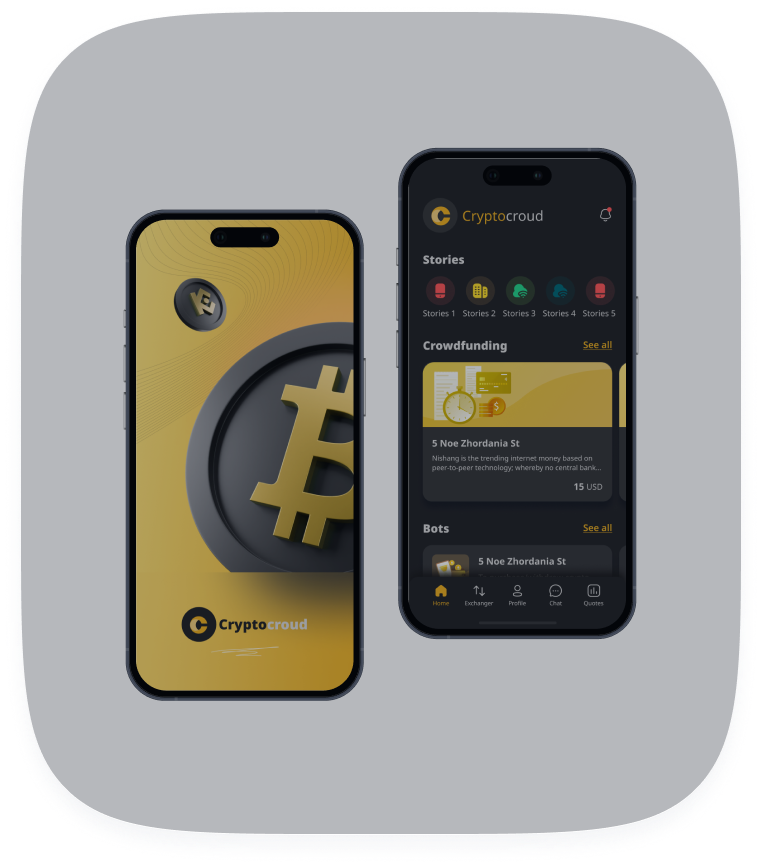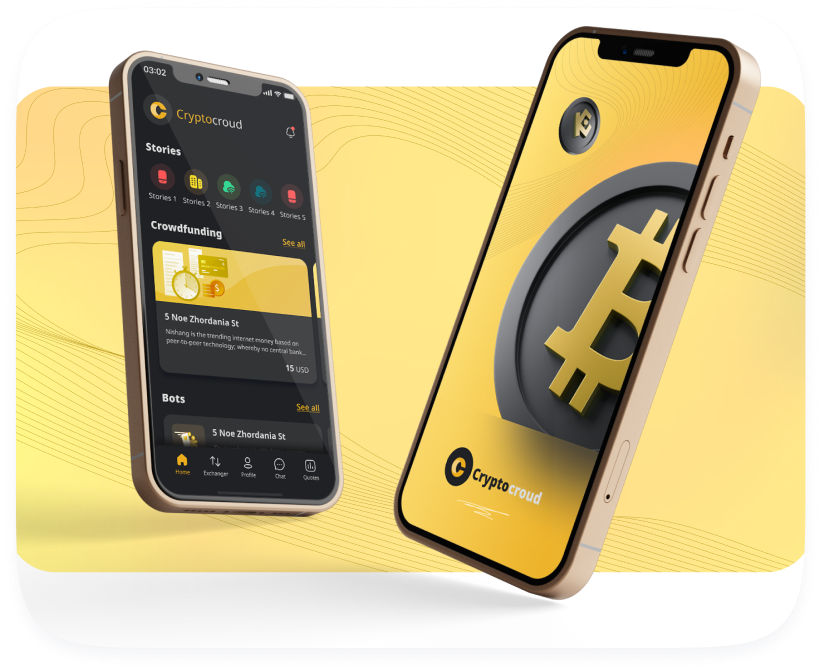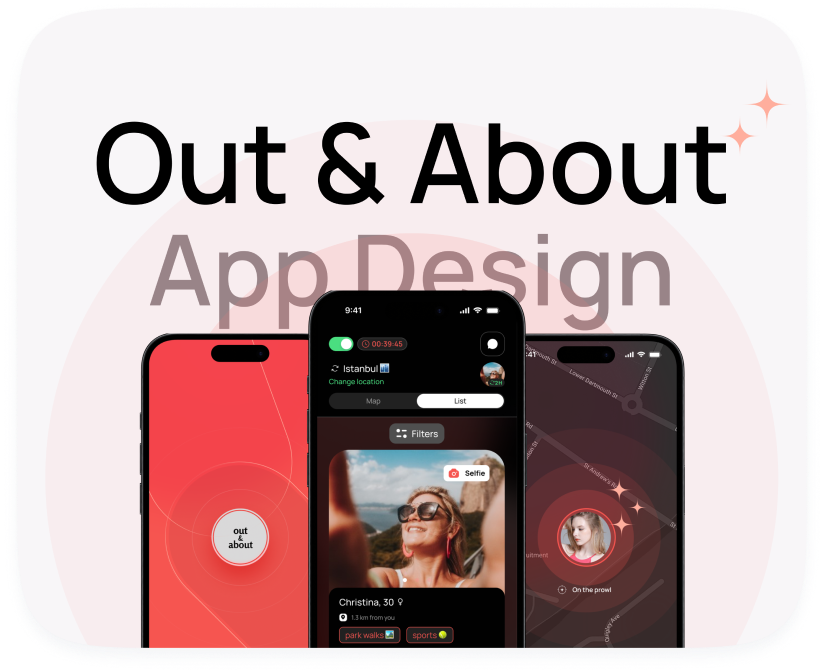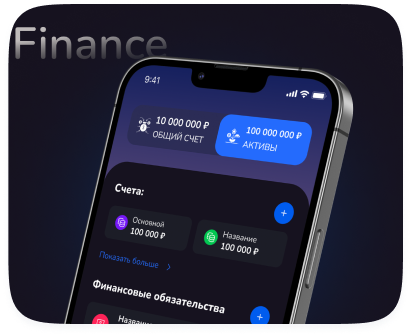
We build mobile apps





We work directly with every client
We deliver solutions with guaranteed results.

We build mobile apps






















It’s similar to buying a car at a dealership: you can go with the basic model, or choose a fully loaded version — it all depends on your needs and goals.

How to create YOUR OWN ChatGPT?

How to PROPERLY create a mobile app in 2024 | Step by step

You pay > We work > You receive the results. If you’re satisfied, you pay the next installment.
We need to have a call and discuss your specific requirements.
One thing we can say for sure: projects under 500,000 rubles are not feasible — we can’t deliver the required quality for less.
We launch, gather user feedback, and add new features that help you earn more from the app.
During development, I always design the architecture to make future updates and improvements easy and convenient.
Some apps perform better with influencer marketing, others through ad networks, and sometimes it’s even effective to buy a contact list and set up retargeting 😊
It all depends on your project’s specifics and is discussed personally.
How we can help:
- Set up ASO (App Store Optimization) and create an attractive app store page to drive free, organic installs.
- Help you develop the right promotion strategy tailored to your app.
- Share contacts of advertising experts I personally work with.
Спросить ChatGPT
The only ongoing cost is paying for the server (hosting).
You pay a subscription fee for the server. The more users your app has, the more server resources it consumes, and the higher the hosting costs.
At the early stages, when you have few users, the server will be FREE.
After that, the cost will gradually increase, but it remains affordable.
For example, an app with 100,000 users spent about $150 per month on hosting.
Get a Quote for App Development
Free & No Obligation. Explore the essential steps to obtaining an accurate and comprehensive quote for your app development project.
Introduction
In today's digital landscape, mobile apps are essential for businesses of all sizes. Whether you're looking to streamline operations, enhance customer engagement, or launch a new product, developing a mobile app can be a game-changer. However, understanding the costs involved is crucial for planning and budgeting effectively. This article will guide you through the process of getting a quote for app development, explaining the factors that influence the price and providing tips for finding the right development partner.
Understanding the Factors Influencing App Development Costs
Before you start seeking quotes, it's important to understand the various factors that contribute to the overall cost of app development. These factors can vary significantly depending on the complexity of your project, the platform you choose, and the development team you work with.
Platform Choice: iOS, Android, or Cross-Platform?
The platform you choose for your app will have a significant impact on the cost. Developing separate native apps for iOS and Android will generally be more expensive than developing a cross-platform app. Native apps are built specifically for a particular operating system (iOS or Android), taking full advantage of the device's features and providing a superior user experience. Cross-platform apps, on the other hand, are built using frameworks that allow them to run on multiple operating systems with a single codebase. Examples of cross-platform frameworks include React Native, Flutter, and Xamarin. While cross-platform development can save time and money initially, it may have limitations in terms of performance and access to native features.
App Complexity: Features and Functionality
The complexity of your app, determined by its features and functionality, is a primary cost driver. Simple apps with basic features like displaying information or collecting data will be less expensive than complex apps with advanced features such as:
- User accounts and authentication
- In-app purchases
- Push notifications
- Geolocation integration
- Data analytics
- Integration with third-party APIs
- Custom animations and user interface elements
Each additional feature requires more development time and expertise, increasing the overall cost.
Design and User Experience (UX/UI)
The design and user experience (UX/UI) of your app are critical to its success. A well-designed app is not only visually appealing but also easy to use and navigate. Investing in professional UX/UI design can significantly improve user engagement and retention. The cost of design will depend on the complexity of the design and the level of customization required. Simple, template-based designs will be less expensive than custom designs that incorporate unique branding and interactive elements.
Development Team: Location and Expertise
The location and expertise of your development team will also influence the cost. Development rates vary significantly across different regions. For example, developers in North America and Western Europe typically charge higher rates than developers in Eastern Europe or Asia. The expertise of the development team is also a factor. Experienced developers with specialized skills will command higher rates than junior developers.
Backend Infrastructure
Many apps require a backend infrastructure to store and manage data, handle user authentication, and provide other server-side services. The cost of the backend infrastructure will depend on the complexity of the app and the amount of data it needs to handle. Cloud-based solutions like Amazon Web Services (AWS) and Google Cloud Platform (GCP) offer scalable and cost-effective options for backend infrastructure.
Testing and Quality Assurance (QA)
Thorough testing and quality assurance (QA) are essential to ensure that your app is bug-free and performs as expected. Testing involves identifying and fixing bugs, ensuring compatibility across different devices and operating systems, and verifying that the app meets all requirements. The cost of testing will depend on the complexity of the app and the scope of the testing effort. It's crucial to allocate sufficient budget for testing to avoid costly problems after the app is launched.
Maintenance and Support
App development is not a one-time project. Ongoing maintenance and support are necessary to keep your app running smoothly, fix bugs, and add new features. The cost of maintenance and support will depend on the complexity of the app and the level of support required. It's important to factor in these costs when budgeting for your app development project.
Steps to Get an Accurate App Development Quote
Getting an accurate app development quote requires careful planning and preparation. Here are the key steps to follow:
Define Your App Requirements Clearly
The first and most important step is to define your app requirements clearly. This includes specifying the features and functionality you want to include, the target audience, the platform you want to develop for, and any specific design requirements. The more detailed your requirements, the more accurate the quote you will receive.
Create a detailed requirements document that outlines all aspects of your app, including:
- App purpose and goals
- Target audience
- Features and functionality
- User stories (how users will interact with the app)
- Design preferences (color schemes, branding guidelines)
- Platform requirements (iOS, Android, or both)
- Technical specifications (e.g., data storage, API integrations)
Research App Development Agencies
Once you have defined your app requirements, the next step is to research app development agencies. Look for agencies with a proven track record of developing successful apps in your industry or with similar features. Check their portfolio, read reviews, and ask for references.
Consider the following factors when choosing an app development agency:
- Experience and expertise
- Portfolio of previous work
- Client testimonials and reviews
- Communication skills
- Development process
- Pricing model
- Location (consider time zone differences and communication barriers)
Prepare a Request for Proposal (RFP)
A Request for Proposal (RFP) is a document that outlines your app requirements and invites app development agencies to submit proposals. The RFP should include all the information necessary for the agencies to understand your project and provide an accurate quote.
Your RFP should include the following:
- Project overview
- App requirements (as defined in your requirements document)
- Technical specifications
- Design preferences
- Budget range (optional, but can help agencies tailor their proposals)
- Timeline
- Evaluation criteria (how you will evaluate the proposals)
- Submission instructions
Submit the RFP to Multiple Agencies
Send your RFP to multiple app development agencies to get a range of quotes and perspectives. This will allow you to compare the different approaches and pricing models offered by each agency.
Contact at least 3-5 agencies to ensure you have enough options to compare.
Evaluate the Proposals Carefully
Once you receive the proposals, evaluate them carefully based on your evaluation criteria. Consider the following factors:
- Pricing
- Technical approach
- Design approach
- Development process
- Team experience
- Communication plan
- Timeline
- References
Schedule Meetings with the Shortlisted Agencies
After evaluating the proposals, shortlist the top 2-3 agencies and schedule meetings with them to discuss your project in more detail. This will give you an opportunity to ask questions, clarify any uncertainties, and assess their communication skills and understanding of your project.
Negotiate the Quote and Contract
Once you have chosen an agency, negotiate the quote and contract. Make sure that the contract clearly outlines the scope of work, the deliverables, the timeline, the payment schedule, and the terms of service. It's crucial to have a clear and comprehensive contract to avoid misunderstandings and disputes later on.
Cost Considerations: Beyond the Initial Quote
While the initial quote provides a crucial starting point, it's important to consider other potential costs that may arise during the app development process. These can include:
Scope Creep
Scope creep refers to the gradual addition of new features or requirements that were not initially included in the project scope. Scope creep can significantly increase the cost of app development, so it's important to manage it effectively. Clearly define the project scope upfront and establish a change management process for handling any requests for changes or additions.
Unexpected Technical Challenges
App development can be complex, and unexpected technical challenges can arise that require additional time and resources to resolve. It's important to have a contingency plan in place to address these challenges and to communicate openly with the development team about any potential issues.
Third-Party Integrations
If your app requires integration with third-party APIs or services, there may be additional costs associated with licensing fees or development time. Research the costs of any third-party integrations beforehand and factor them into your budget.
Marketing and Promotion
Once your app is developed, you'll need to market and promote it to attract users. Marketing costs can vary depending on the channels you use and the target audience you're trying to reach. Consider budgeting for app store optimization (ASO), social media marketing, paid advertising, and public relations.
Tips for Minimizing App Development Costs
While app development can be expensive, there are several ways to minimize costs without compromising quality:
- Prioritize features: Focus on the core features that are essential for the initial launch and defer less critical features to later releases.
- Choose the right platform: Consider cross-platform development if it meets your needs and can save you time and money.
- Use existing libraries and frameworks: Leverage existing libraries and frameworks to reduce development time and effort.
- Communicate effectively: Clear and frequent communication with the development team can help prevent misunderstandings and costly mistakes.
- Test early and often: Testing early and often can help identify and fix bugs before they become major problems.
- Consider using an Agile development methodology: Agile development allows for flexibility and adaptation to changing requirements, which can help minimize costs and improve the overall outcome.
- Thoroughly research the agency's portfolio and client testimonials before engaging.
Table: App Development Cost Breakdown (Estimates)
| Component | Description | Estimated Cost Range |
|---|---|---|
| Planning & Discovery | Requirement gathering, market research, competitive analysis | $2,000 - $10,000 |
| UX/UI Design | Wireframing, prototyping, visual design | $5,000 - $20,000+ |
| Frontend Development (iOS/Android) | Building the user interface and implementing features | $15,000 - $50,000+ per platform |
| Backend Development | Server-side logic, database design, API development | $10,000 - $40,000+ |
| Testing & QA | Functional testing, performance testing, usability testing | $3,000 - $15,000 |
| Project Management | Coordination, communication, risk management | $2,000 - $10,000 |
| Deployment & Launch | App store submission, server setup | $1,000 - $5,000 |
| Maintenance & Support (Yearly) | Bug fixes, updates, server maintenance | 10-20% of total development cost |
Note: These are just estimates, and the actual cost may vary depending on the specific requirements of your project.
Conclusion
Getting a quote for app development is a critical step in the app development process. By understanding the factors that influence the cost, following the steps outlined in this article, and considering the tips for minimizing costs, you can obtain an accurate quote and find the right development partner to bring your app idea to life. Remember to prioritize clear communication, thorough planning, and a well-defined scope to ensure a successful and cost-effective app development project.






